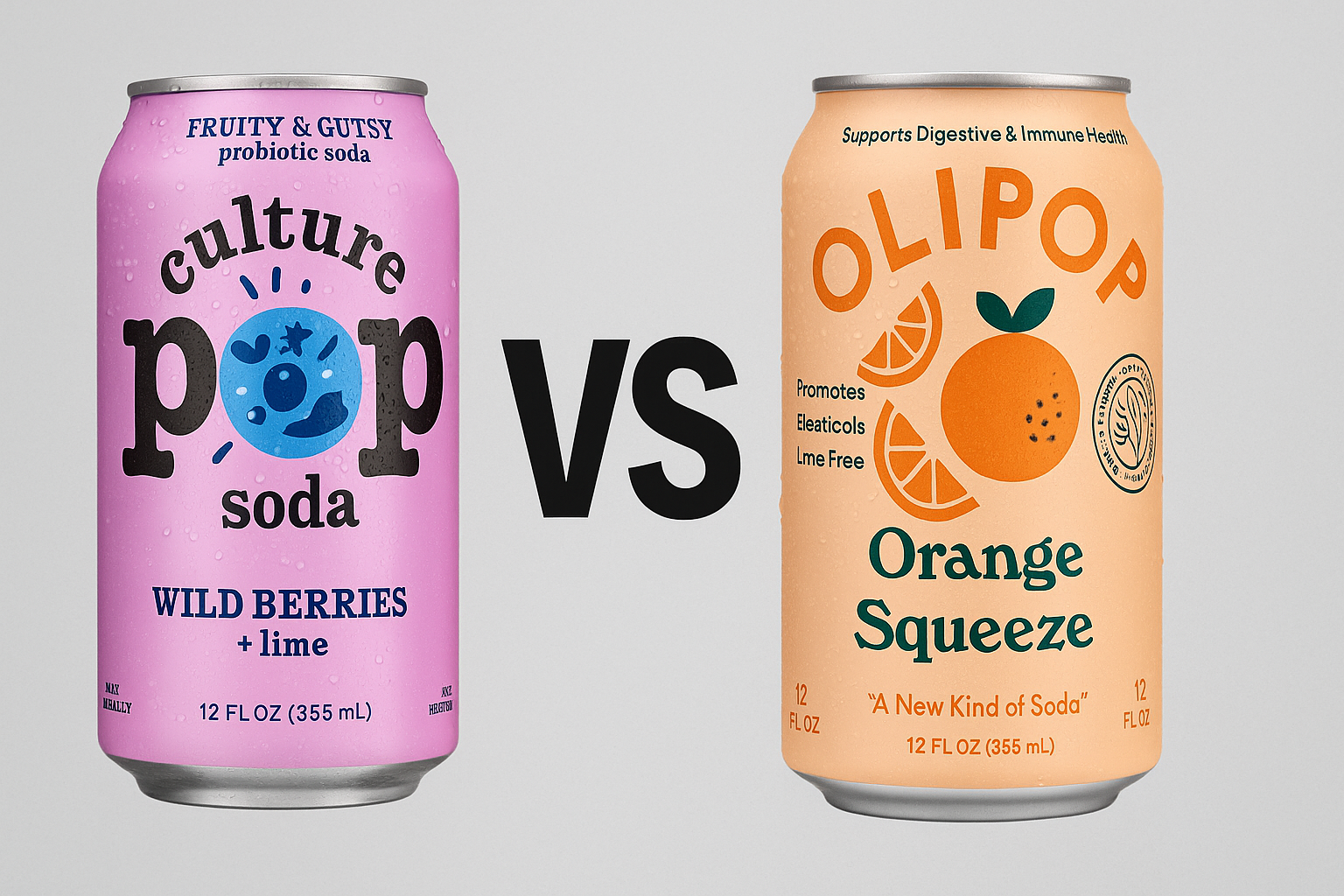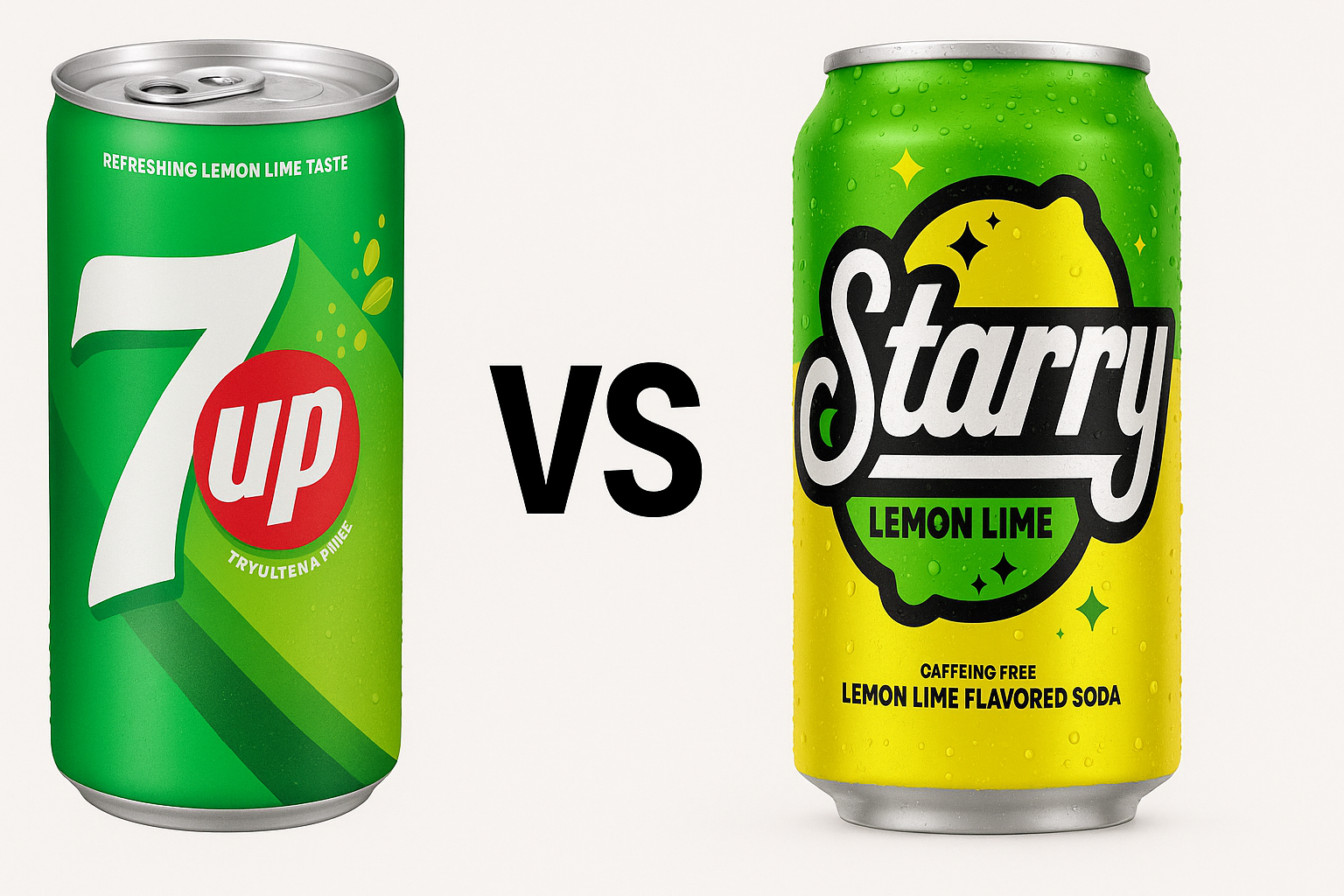Culture Pop vs. Olipop: An Honest Comparison for 2025
If you’ve walked down the beverage aisle recently, you’ve probably noticed the explosion of so-called “gut-health” sodas. Among them, Culture Pop and Olipop stand out as two of the most talked-about brands—each claiming to be a healthier upgrade from traditional soda.
But what really sets them apart? One leans on probiotics, the other on prebiotics, and both bring unique taste experiences to the table. Let’s break down their origins, ingredients, nutrition, and health claims so you can decide which bubbly drink belongs in your fridge.
Brand Origins & Philosophy
Olipop: The Prebiotic Pioneer
Founded in 2018 by Ben Goodwin and David Lester, Olipop set out to reinvent soda. Their mission: create nostalgic flavors like cola and root beer but pack them with functional plant-based fibers to support gut health.
Working with microbiome researchers, they developed “Olismart”, a proprietary mix of prebiotics, botanicals, and plant fibers. Today, Olipop is sold in more than 25,000 U.S. stores and is one of the fastest-growing functional soda brands.
Culture Pop: The Probiotic Purist
Launched in 2020, Culture Pop takes a different approach—bringing live probiotics into sparkling beverages without artificial sweeteners. Their sodas are made by steeping organic herbs and spices into real fruit juice, creating bold, less-sweet flavors.
Instead of stevia or monk fruit, Culture Pop relies solely on organic fruit juice for sweetness. Each can contains live probiotics (Bacillus subtilis), a shelf-stable strain that doesn’t require refrigeration.
Ingredient & Formulation Breakdown
Olipop’s Prebiotic Formula
Olipop is classified as a prebiotic soda, meaning it contains plant fibers that help nourish the good bacteria already in your gut.
Key ingredients include:
- Cassava Root Fiber & Jerusalem Artichoke Inulin → main sources of prebiotic fiber
- Chicory Root, Marshmallow Root, Nopal Cactus → botanicals historically used for digestion support
- Sweetness → stevia plus small amounts of fruit juice concentrate
- Fiber Content → about 9g fiber per can (32% DV)
Culture Pop’s Probiotic Blend
Culture Pop delivers live probiotics directly in the drink. Unlike Olipop’s fiber approach, these are active cultures intended to add beneficial bacteria to your gut.
What makes it unique:
- Probiotics → contains Bacillus subtilis (CFU count not disclosed)
- Sweetness → organic fruit juice only (no stevia, monk fruit, or refined sugar)
- Flavor Building → organic herbs and spices like chili powder, turmeric, and rosemary add complexity
Nutritional Comparison
| Feature | Olipop | Culture Pop |
|---|---|---|
| Function | Prebiotic soda | Probiotic soda |
| Key Benefit | ~9g fiber (32% DV) | Live probiotics (Bacillus subtilis) |
| Calories (per 12 oz) | 35–50 | 40–45 |
| Sugar Content | 2–5g | 6–8g (from fruit juice) |
| Carbs (per can) | 13–16g (mostly fiber) | 8–10g |
| Sweeteners | Stevia + fruit juice concentrate | Organic fruit juice only |
| Caffeine | Only in cola/Dr. Goodwin flavors | None |
Taste Test & Flavors
Olipop Experience
Olipop recreates classic soda flavors with a healthier twist. The carbonation is lighter than traditional soda, and some flavors have a noticeable stevia aftertaste—which can divide opinion.
- Popular Flavors: Root Beer, Vintage Cola, Orange Squeeze, Strawberry Vanilla
- Best For: People who want a lower-sugar soda alternative with familiar flavors
Culture Pop Experience
Culture Pop leans more toward sophisticated spritzers than classic soda. The taste is less sweet, layered with herbs and spices, and free of stevia’s aftertaste.
- Popular Flavors: Watermelon Lime, Orange Mango, Ginger Lemon Turmeric
- Best For: People who dislike stevia and enjoy complex, refreshing flavors that work as mocktails
Health Benefits: The Real Story
Neither brand is a “miracle drink.” Both are better choices than regular soda, but their benefits should be kept in perspective.
- Olipop (Prebiotics) → 9g of fiber per can helps fill daily gaps, but experts emphasize fiber is best from whole foods. Too much at once may cause gas or bloating.
- Culture Pop (Probiotics) → live probiotics may support gut health, but overall impact depends on your broader diet. Since CFU counts aren’t disclosed, exact effectiveness is hard to measure.
(Note: The recent lawsuit against Poppi—another prebiotic soda—over exaggerated health claims shows why it’s important to stay skeptical of marketing buzzwords.)
Price & Availability
- Olipop: $2.50–$3.50 per can, widely available at Target, Walmart, Whole Foods, Kroger, and online. Subscription discounts offered.
- Culture Pop: $2–$3 per can, sold at Walmart and regional grocery chains, plus online.
Final Verdict: Which Should You Choose?
Choose Olipop if:
- You want to boost daily fiber intake.
- You’re looking for a healthier substitute for classic sodas.
- You don’t mind stevia’s flavor.
Choose Culture Pop if:
- You want probiotics instead of prebiotics.
- You prefer drinks sweetened only with fruit juice.
- You like lighter, more complex flavors closer to craft spritzers.
👉 Ultimately, both are innovative soda alternatives that beat traditional sugar-loaded options. The “best” choice comes down to your taste preference and nutrition goals—so the smartest move might be to grab a variety pack of each and see which your gut (and taste buds) prefer.


